#original alien species
Text

Comparison between Tovoxrans' first and current design! I think that now their design is more clear about its function and fits the ,,alien miner" vibe more.
Also I realised it looks like the chad vs virgin meme
#myart#alien#alien species#original alien species#sci fi#science fiction#speculative biology#speculative evolution#spec bio#spec evo#creature#creature design#monster design#tovoxrans#worldbuilding
53 notes
·
View notes
Text
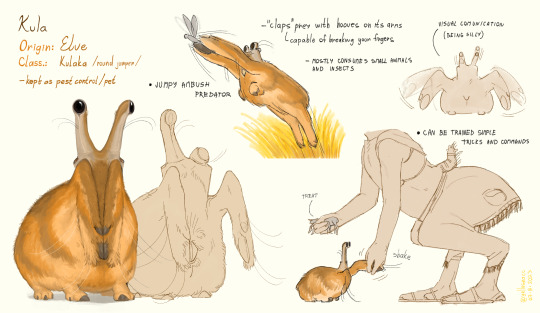
Kula!
A popular domesticated animal of slomen.
Kula are adapted for grassy areas with lots of small prey. In the wild, they either jump after flying or jumping prey or wait at burrows before smashing their prey with their hooves. If the smash isn't enough they hold it to their beak and finish it. Some species are more specialized to wait while others to jump. The domesticated Kula is speculated to be one of the more energetic hunters, mostly interested in 'insects'.
In ancient times wild Kula were attracted to sloman settlements as they would also attract prey with the slomans' food and light.
The slomen would soon learn that Kula were not pests since the wild animals were yet to be spoiled by premium meat cuts and preferred fresh moving meat that the slomen didn't want around.
In current times many cultures keep these animals as pest control on farms and in larger houses. They can be commonly seen in underground rooms that serve as food storage but for a healthy mental state, they need time on the sun.
While in the wild they are usually solitary or in small groups, Kula have a complex body language that they use to express their mood and/or needs. This can be very cute and funny, helping them become as loved as they are.
Many owners will grow to care deeply for their Kula but some cultures recognize them directly as pets. In the high-ranking societies of these cultures, pet Kula get even rounder. Often a certain trait is popular in a culture, resulting in localised breeds with different shapes and colors.

Some little goober possibilities - not entirely canon
In a few places, Kula are also part of a religion and have their own shrines.
#art#speculative biology#artists on tumblr#digital art#artwork#worldbuilding#speculative evolution#fantasy#spec bio#original alien species#original species#spec evo#speculative zoology#xenobiology#domesticated animals#slomen
2K notes
·
View notes
Text

#creature design#spec evo#spec bio#spec zoo#alien#alien design#original alien species#speculative evolution#speculative biology#speculative zoology#bubago#bubago g#xenofiction#he’s an art study so he doesn’t deserve a body#don’t worry he’s fine
227 notes
·
View notes
Text
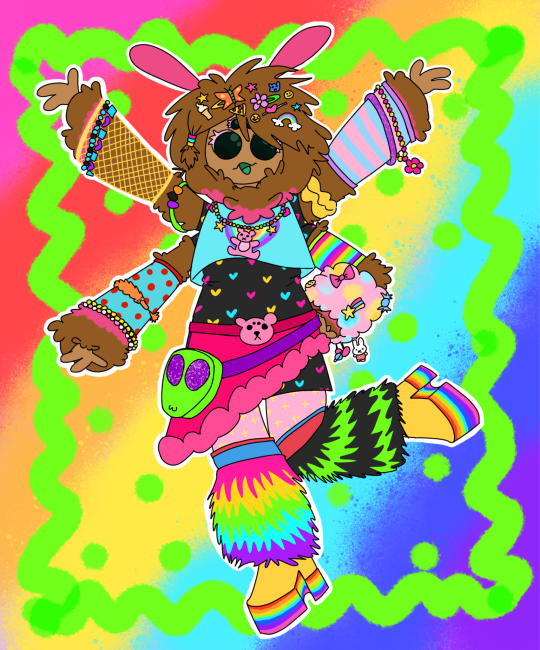
CRINGETOBER Day 3 - Overly Complicated Outfit
When you're a Zair, you have extra limbs for extra accessories!! She's friends with this young lady, by the way! They're probably meeting up to go to a rave later.
#cringetober 2023#cringetober#rainbowcore#rainbow#scenecore#scene#decora kei#robot art#alien#alien art#zair#original alien species#alien oc
126 notes
·
View notes
Text
Desert Loreirran village concept art
I’m not that great at architecture, so I’m practicing it with some village concept art. I’ll definitely me making more here soon. This is a good time to also talk about the desert village architecture. (Information under the concept pictures)

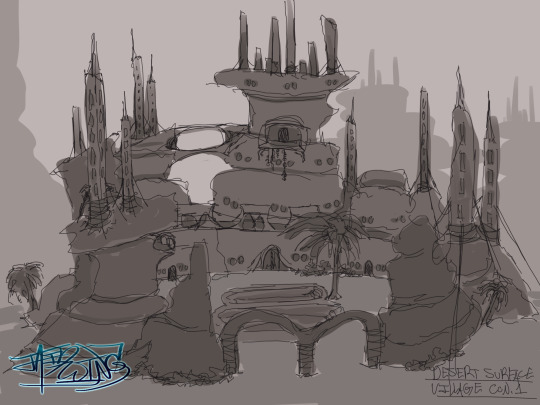
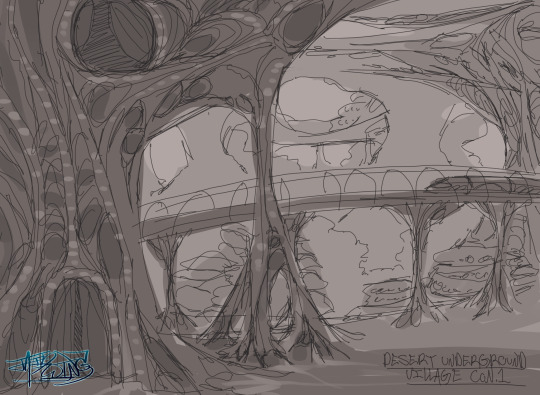
1. Building Materials:
The desert region Loreirrans utilize a combination of natural materials to construct their desert homes and city buildings. These materials include:
- Sand: Sand is used as a foundational element, providing stability and insulation against the desert's extreme temperatures.
- Mud and Clay: Mud and clay are mixed with water to create a binding agent. This mixture is essential for forming the structures and keeping them sturdy.
- Plant Wastes: Various plant materials, such as dried leaves and stems, are added to the mix. These materials contribute to the insulation and help regulate the interior temperature.
- Water: Water is a precious resource in the desert, and it is carefully used to moisten the building materials and facilitate their molding.
2. Cooling Architecture:
The desert region Loreirran buildings are ingeniously designed to maintain a comfortable interior temperature, even during scorching summer months. Their architecture includes:
- Thermal Insulation: The combination of mud, clay, and plant waste acts as natural insulation, keeping the interiors cool during the day and retaining warmth during the chilly desert nights.
- Ventilation: Buildings feature strategically placed openings and wind-catching structures that facilitate natural ventilation. Cross-breezes help regulate the indoor climate.
- Shaded Courtyards: Courtyards within villages and towns are often surrounded by buildings, creating shaded areas where residents can seek relief from the sun's intensity.
3. Surface Villages and Subterranean Cities:
The Loreirrans have adapted their architectural styles to suit different settlement types:
Surface Villages and Towns: These settlements are typically located in proximity to natural rocky formations and hills. The Loreirrans mimic the rounded and occasionally pointed shapes of these geological features in their building designs, ensuring that their structures blend seamlessly with the desert landscape.
Underground Cities: In larger urban centers, Loreirrans construct underground cities to escape the extreme surface temperatures. These subterranean cities are accessed through large sun holes in the ground. Roads connect these cities to the surface, allowing for transportation and trade.
4. Aesthetic Variations:
The aesthetic of Loreirran architecture varies based on the specific location of a village or town:
- Rounded Structures: In areas with smoother rock formations, Loreirran buildings adopt smooth and rounded shapes. These structures flow organically with the surrounding landscape.
- Pointed Structures: In regions with more rugged rock formations, some buildings may feature natural pointiness to mimic the local geological formations, creating a unique architectural style that honors the desert's natural beauty.
#alien#Loreirrans#concept art#loreirran#concept architecture#aliens#village art#art#artist on tumblr#icera 5#digital artist#digital sketch#digital drawing#concepts#original species#original character#world building#original alien species
81 notes
·
View notes
Text

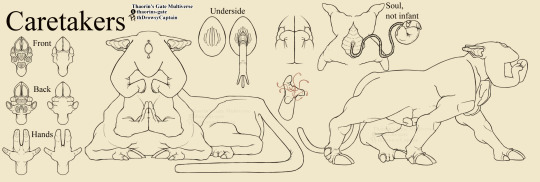
Finally finished them! Or at least the anatomy reference. They are born with their souls outside their bodies due to the fact they live in the plane that serves as the doorway between the afterlife and the living planes.
Explanation Here.
#thaorin’s gate#drowsys art#thaorin's gate#the prime nexus#original alien species#speculative biology#speculative evolution
96 notes
·
View notes
Text
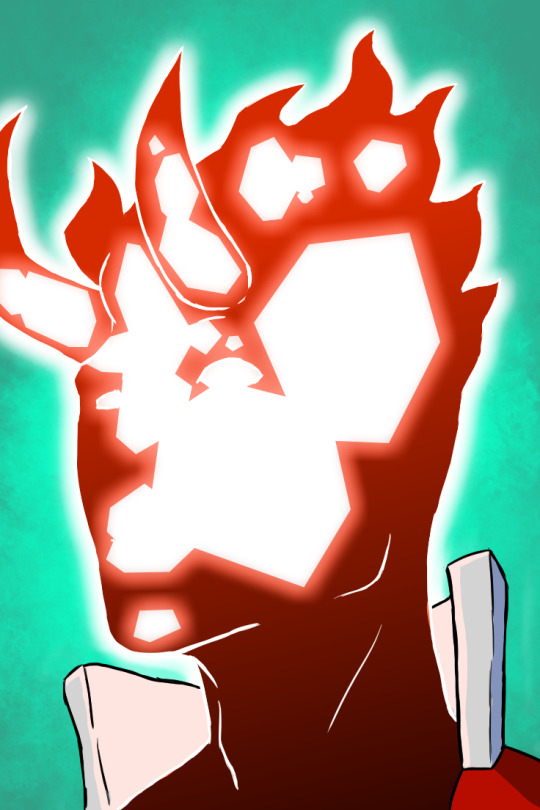
Sun-Slinger headbust!
#oc artwork#paradox universe#oc art#character reference#superhero oc#superhero universe#oc#superhero#comic art#super hero#alien oc#alien species art#original alien species#oc alien#nova kid inspired#novakid#gunslinger oc#gunslinger#spaceferren comics#space oc
19 notes
·
View notes
Text

Part of Elîsa and Keenôree's crew, Monkey Wrench (or simply Wrench) is a Pseudo-Centaur born and raised on Waldei* (the Pseudo-Centaurian home world). Where it is very common for most Waldei'an countries to have their children name themselves after pretty much anything when they finish their second puberty. In which that is too much worldbuilding for a character intro for me to get into.
Wrench became a part of Elîsa and Keenôree's team after both of them realized they were horrible at working on machines that weren't firearms. At first having him on as an engineer for their ship for hire, they all later started to become good friends. Monkey Wrench kinda falls into the catagory of "laid back hippie", but is a fountain of wisdom and decent advice. If you got a problem, mechanical or emotional, he's usually got your back.
*vahl-deye
#my art#salt and light#oc#original character#monkey wrench#original story#stardust nibiru 2#original alien species#original species#alien#world building#worldbuilding#art room#art#digital art#small artist#fantasy#sci fi#speculative fantasy#artists on tumblr#artists of tumblr#sci fi fantasy
14 notes
·
View notes
Text
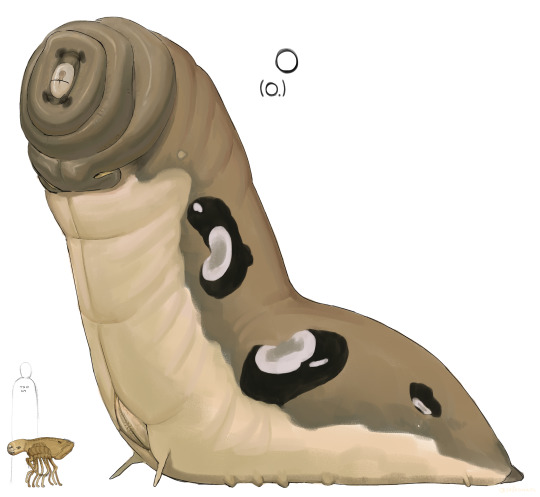
A normal caterpillar
Okay so this is finally a drawn O (final stage of O. species that ifey belong to as the first stage)
They are a rare sight as most Os don't ever move out of their family/town/city hub. What they do is they lay all day taking food from the colony members while their bodies create more ifey (their mouth is down there by the little ifey). They do this by basically splitting. An ifey is fully formed with some knowledge already since Os have a separate brain just to duplicate it for *bebes*.
Os can also distantly communicate with their "children" but it's limited. Radiowaves moment.
With size, they can look like this picture on average but the bigger their colony the bigger the O which also means more ifey-making.
If you are lucky enough to see an O (you are an important diplomat or a close colony member) you see that they are also covered in tattoos. Those will usually depict the colony's history or whatever the O wants really.
Not sure if this is their final look but I'm satisfied for now. Might maybe change the "mask" but that's not the most important.
#art#digital art#speculative biology#spec bio#alien species#artwork#ifey#O#O.#artists on tumblr#original art#original alien species#speculative evolution#worldbuilding#fantasy
113 notes
·
View notes
Text

Prayer for Alliance
#my artwork#character art#dragon art#dragon oc#original species#original character#original alien species#alien oc#procreate#illustration#yes the dragon is heavily based on Reshiram lol#been bouncing around the lore of this alien species that lives with these dragon gods in my head for years#wyvern#dragon
18 notes
·
View notes
Text
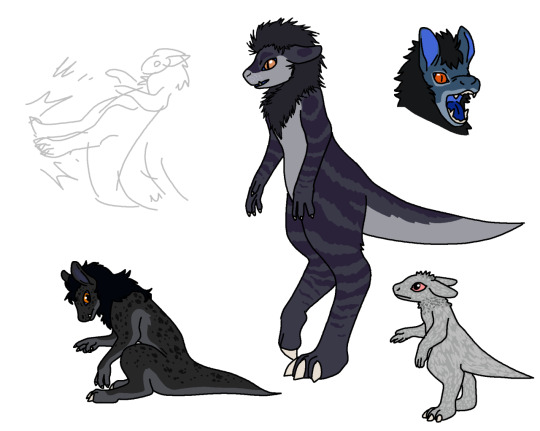
Have some Rutatarri, an alien species made by @xenosaurus . The culture and speculative biology about these guys is so interesting, I highly suggest reading about them.
I did my best to draw the Rutatarri on model, though I made a few 'head-canons' I guess you could say, since I didn't know some information about them. I'm not sure what their young would look like, but I gave it my best guess on the right corner. I imagine they would grow darker as they aged. I also made up their blue mouth/tougne/skin, just because I thought it would be fun.
15 notes
·
View notes
Text

Industrial light ⚙
An experiment I made to see if I haven't forgotten how to make illustrations in my style.
Also it represents tovoxran cities' vibe and aesthetic (idk if it's cringe to use that word or not), basically steel beams, gears, metal scaffoldings and pipes everywhere. Just industrialism and utility.
The drawing itself is showing a heat generator in one of underground tovoxran cities on Tillturn (their homeworld). In the past they used to build their cities around active volcanoes or lava lakes for heat, because the whole cave system is cold, covered in ice and snow. Now they can build everywhere, as their technology allows that.
#myart#alien#alien species#original alien species#sci fi#science fiction#industrialism#illustration#speculative evolution#speculative biology#spec evo#spec bio#creature#creature design#worldbuilding#tovoxrans
670 notes
·
View notes
Text

An elder master performing one of many forms of a silent wing dance. The goal of this show is to appeal to the eyes alone, using movement and colors - making too much sound is seen as a failure in this specific style.
Some of the silent dances might try to confuse the watcher with fabric appearing as other body parts or wing flags that cover most of the performer. With uniiman arts, there are really too many variants to cover as their whole deal is to compete and innovate (but most often can still be categorized).
To some, the silent dance is more artistic than the loud one while others find it lazy not to play music with the body. It really is a question of taste.
Based on the crest drawings of this uniima it seems their show's purpose is to find 3 partners and create three lives.
This however isn't because their dance or outfit is sexual, it is simply a show of skill with an additional message.
#art#speculative biology#artists on tumblr#digital art#artwork#worldbuilding#speculative evolution#uniima#spec bio#alien species#spec evo#original alien species#alien culture#uniima culture#dance#old people dance
300 notes
·
View notes
Text
been playing around with procreate dreams, it’s real neat
i’ve stuck with doing the only kind of animation i know, the humble walk cycle
#procreate dreams#creature design#spec evo#speculative evolution#spec zoo#speculative zoology#spec bio#speculative biology#original alien species#alien design#alien#alien species#xenofiction#jus a lil guy#hexapod kind of#maybe he’s a centaur#animation#digital art
71 notes
·
View notes
Text
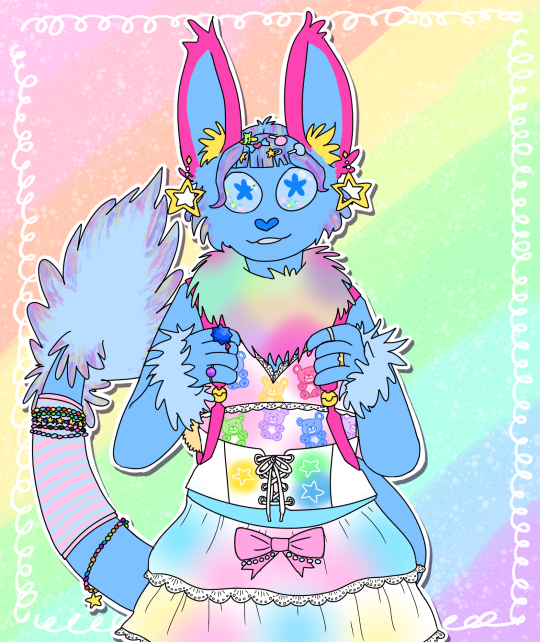
Saw the outfit in this post and just had to draw a Sucralite wearing it. I’ve been working on this off and on for a few months now; I really like complicated little outfits like this.
Linked image under the break 💖
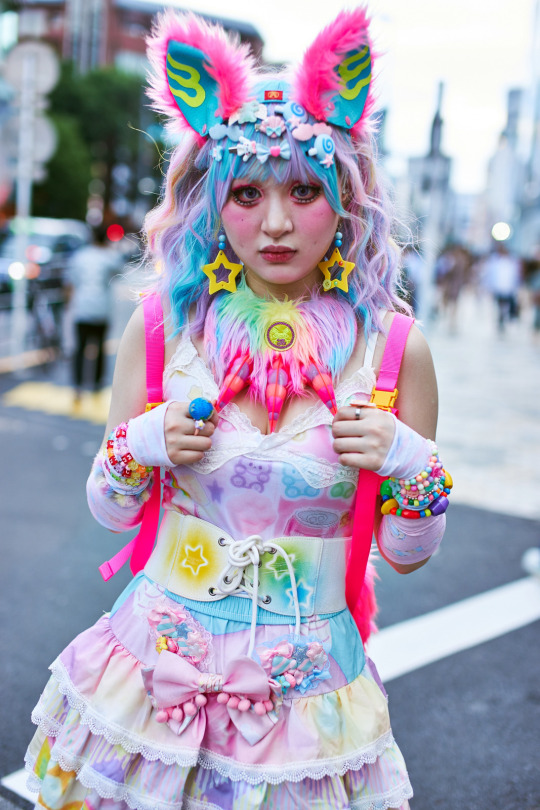
#robot art#digital art#photo redraw#sucralite#other skies#original alien species#j fashion#jpop#rainbowcore#pastel#cutecore#kawaii#fashion
18 notes
·
View notes
Text
The Loreirrans - regional appearance and subspecies
it is time that i finally make a big post about my original alien species, the Loreirrans! keep in mind that i have been world-building about them for about 5 years now, so i have so much information about them that i'll need to post in sections. This post will focus on the diverse appearances the Loreirrans take and a couple of the subspecies that exist.
General Physical Appearance
Appearance of the Loreirrans
The Loreirrans are a captivating and ancient species, distinguished by their unique physical characteristics. These highly intelligent, bipedal humanoids possess a striking appearance, and their attributes vary depending on their age, environment, and reproductive state.
Height and Physique:
Loreirrans exhibit a remarkable range in height, typically standing between 8 to 12 feet tall. In rare instances, some Loreirrans can grow even taller, reaching heights of 15 feet or more. Their body types, from slender to robust, are influenced by the environmental conditions of their habitat, and their fur varies from short peach fuzz to long and lush, offering insulation and camouflage.
Coloration:
The coloration of Loreirrans is predominantly dark, serving as effective natural camouflage. However, their bodies are adorned with vibrant neon patches that appear on their joints, backs, and the undersides of their feet and hands. These bright accents contrast beautifully with their dark base color and are influenced by their specific environment.
Limbs and Digits:
Loreirrans possess five fingers on each hand and two toes on each foot, except for those residing in the swamp and jungle regions, who boast a unique third toe, functioning like a dew claw. Their hands and feet are highly dexterous, facilitating complex tasks.
Sensory Adaptations:
Intriguingly, Loreirrans lack visible ears and noses. Instead, they rely on sensory input from small openings located behind their jawlines for auditory perception. They have sharp front teeth reminiscent of canines, and their back teeth are adapted for grinding. A retractable tongue, capable of extending up to 3 feet, aids in various tasks.
Sensory Organs:
Loreirrans possess unique sensory adaptations. They lack conventional eyes but perceive the world through infrared and electromagnetic fields, providing them with a distinct and comprehensive view of their surroundings. Adults boast sensory organs on their backs and shoulders, visible as neon-colored patches, which enhance their perception further.
Metamorphosis and Reproduction:
Loreirrans undergo a metamorphosis-like transition from youth to adulthood. Prepubescent and young Loreirrans lack certain adult traits, including the neon patches, extra arms, antennae, and a spiny ridge extending from head to tail, lacking a tail as well. Young Loreirrans have a more humanoid appearance with four antennae. Upon completing this transformation, Loreirrans are considered adults, achieving sexual maturity and the potential to produce offspring. Most Loreirrans are hermaphrodites, capable of both male and female reproduction, although exceptions exist with distinct male or female sexes.
Regional Appearances
Appearance of Tundra Regional Loreirrans (Tundrans)
Fur and Palms:
Tundra regional Loreirrans, affectionately known as Tundrans, exhibit distinctive physical traits uniquely adapted to their frigid environment. Their fur is notably thick, covering their entire body in a pristine white coat. While their body fur is plush and soft, their palms boast a shorter but denser fur, providing extra insulation against the cold. This specialized fur texture ensures warmth and comfort in the harsh tundra conditions.
Antennae:
The Tundrans' antennae are shorter than those of Loreirrans from other regions, and they share the same fur texture as their palms. These shorter antennae are perfectly suited to their environment and contribute to their streamlined appearance.
Size:
Tundrans are comparatively smaller in stature, standing at an average height of 7 to 8 feet tall. This smaller size allows them to navigate their icy surroundings with agility and efficiency.
Color Variations:
While Tundrans predominantly sport a pristine white fur coat, some individuals may exhibit patches of alternative colors, such as browns or grays. However, it's important to note that Tundrans never possess bright neon colors on their fur. Instead, their dark and neon colorations are concealed beneath their fur, remaining unseen unless a Tundran undergoes shaving.
Appearance of Water Regional Loreirrans (Watorrians)
Skin and Gills:
Watorrians are uniquely adapted to their aquatic habitat, featuring smooth, water-resistant skin that allows for effortless gliding through the water. Distinctively, they possess three rows of gills situated beneath their jawline. These gills play a crucial role in respiration and appear to connect to their infrared sensing organs, granting them unparalleled underwater perception.
Webbed Adaptations:
Watorrians are streamlined swimmers, thanks to their extensive webbing. This webbing extends across various parts of their bodies, facilitating swift and graceful movement in the aquatic realm. Notably, their fingers, toes, antennae base, and tail base are adorned with webbed structures, optimizing their hydrodynamic efficiency.
Spiny Ridge and Sensory Fins:
The spiny ridge of Watorrians is elongated and exceptionally smooth, contributing to their streamlined form. Along the bottom of their tail and stomach, they possess small sensory fins that serve as sensitive detectors, allowing them to perceive even the slightest changes in water conditions, such as sudden movements or currents.
Colorations:
Watorrians exhibit a color palette that leans toward shades of blues and greens, mirroring the hues of their underwater world. However, some individuals may display variations in color, including purples and reds. These colorations add to their visual diversity and blend harmoniously with their aquatic surroundings.
Size:
Standing at a height of 8 to 9 feet when on land, Watorrians are equally formidable underwater, where their total length, from head to tail, spans an impressive 18 to 20 feet. These dimensions are finely tuned for their adept navigation and survival in the water.
Appearance of Desert Regional Loreirrans (Desertorrians)
Plentiful Representatives:
Among all regional Loreirrans, Desertorrians are the most abundant and serve as the primary physical representation of the Loreirran species.
Fur and Coverage:
Desertorrians possess a distinct covering of thin peach fuzz that envelops their entire body, with notable exceptions. This fine fur provides insulation and protection from the desert environment. Notably, their spiny ridge, the soles of their feet, and the palms of their hands remain devoid of fur.
Cranial Features:
One distinguishing feature of Desertorrians is the slight elongation of the back of their heads compared to Loreirrans from other regions. This subtle cranial adaptation is a hallmark of their regional identity.
Size and Stature:
Desertorrians stand as the largest of all Loreirrans, with heights ranging from an impressive 10 to 12 feet. Their imposing stature reflects their adaptability and resilience in the challenging desert landscape.
Coloration Variations:
The coloration of Desertorrians typically leans towards darker shades, aligning with the arid, sun-soaked environment they call home. However, rare instances reveal Desertorrians adorned in warm pastel hues or even completely black, showcasing the intriguing diversity within their regional population.
Appearance of Forest Regional Loreirrans (Forestorrians)
Size and Stature:
Forestorrians, as inhabitants of the lush forest region, are slightly smaller in stature compared to the Desertorrians. They typically stand at heights ranging from 10 to 11 feet, making them imposing yet agile within the forest canopy.
Coloration Palette:
One of the most distinctive features of Forestorrians is their neon coloration, which leans heavily towards earthy and natural tones. These hues include varying shades of greens, browns, and blues, perfectly suited for blending into their forest environment.
Prehensile Tails:
Unlike Loreirrans from other regions, Forestorrians boast prehensile tails that are notably thinner at the base. This unique adaptation allows them to grasp and manipulate objects with precision, aiding in their arboreal lifestyle.
Limbs and Digits:
Forestorrians' limbs and digits are characterized by their slightly greater length and slenderness. These features enhance their agility in navigating the dense foliage and intricate terrain of the forest region.
Spiny Ridges and Claws/Talons:
In contrast to their Desert counterparts, Forestorrians exhibit shorter spiny ridges along their backs. Additionally, their claws or talons are notably thicker, providing them with superior grip and dexterity when climbing trees and navigating the forest environment.
Additional Notes:
Forestorrians' neon coloration, while vibrant, remains subtle and harmonious with the forest surroundings.
Their adaptability to the forest ecosystem makes them exceptional climbers and agile explorers of their habitat.
Appearance of Jungle/Swamp Regional Loreirrans (Surglans)
Distinct Regional Similarities:
Surglans, the inhabitants of both the Swamp and Jungle regions, share a strikingly similar appearance. They stand out as the least abundant among all regional Loreirrans.
Spiny Ridges and Antennae:
One of the defining features of Surglans is their elongated spiny ridges, which extend along their backs, providing them with a unique and striking appearance. Additionally, Surglans have longer antennae compared to other regional Loreirrans, enhancing their sensory perception in their lush and vibrant environments.
Coloration Spectrum:
Surglans exhibit an impressive array of colorations that mirror the vibrant hues of the swamp and jungle ecosystems. These colors include varying shades of reds, oranges, yellows, greens, and on occasion, blues. This diverse palette helps them blend seamlessly into their surroundings and offers a stunning display of regional diversity.
Claws/Talons and Third Toe:
Surglans possess longer and thicker claws or talons, granting them superior dexterity when navigating the dense undergrowth and moist terrain of their regions. What sets them apart further is the presence of a third toe, which resembles a dew claw. This additional appendage enhances their agility and grip, making Surglans adept climbers and hunters in their challenging environments.
Size and Stature:
Surglans typically range from 9 to 10 feet in height, reflecting their adaptability to the dynamic and intricate landscapes of the Swamp and Jungle regions.
Additional Notes:
Surglans' longer spiny ridges and antennae serve both aesthetic and practical purposes, aiding in sensory perception and maintaining balance in their lush habitats.
Their vibrant colorations are a testament to the rich biodiversity and unique flora and fauna of their regions.
Loreirran Subspecies
Off-planet Loreirrans
Physical Characteristics:
Off-planet Loreirrans display a set of distinct physical traits that set them apart from their counterparts on Icera-5. These differences are primarily adaptations to their environment in outer space.
Stature and Size:
Off-planet Loreirrans are notably shorter in height, typically ranging from 5 to 6 feet tall. This diminutive stature is a result of their adaptation to living in environments with weaker gravity compared to their home-world.
Coloration:
Their coloration differs significantly from their terrestrial counterparts. Off-planet Loreirrans are lighter in color, reflecting the muted tones of their artificial habitats in space.
Antennae:
In contrast to the longer antennae seen in Loreirrans on Icera-5, Off-planet Loreirrans have shorter antennae. This adaptation likely aids in maneuvering within the confines of their space stations and artificial planets.
Body Patterns:
The body patterns of Off-planet Loreirrans are limited to complex stripes and spots. These patterns may serve as a form of camouflage within the artificial structures of their space habitats.
Environment and Lifestyle:
Off-planet Loreirrans call space stations and artificial planets their home. They inhabit environments with weaker gravity compared to Icera-5. This unique habitat has led to specific adaptations that enable them to thrive in space.
Life Span and Development:
Despite their adaptations, Off-planet Loreirrans tend to have shorter life spans compared to their counterparts on Icera-5. Their bodies are adapted for faster development during childhood, likely as an advantage in the confined and resource-limited space environments they inhabit.
Mixed ancestory
Compatibility and Rarity:
It is exceptionally rare for any species to be compatible with Loreirrans, and this subspecies represents a fascinating exception. They share a unique ancestral connection with a species that has been extinct for centuries, leaving behind only mixed Loreirrans and a rich cultural legacy.
Distinct Characteristics:
These unique Loreirrans do not undergo the customary second metamorphosis that other Loreirrans experience. As a result, their physical characteristics are distinct and reflective of their ancestral lineage.
Stature and Size:
Loreirrans with extinct ancestry typically stand at heights ranging from 7 to 8 feet. This falls within the range of their Loreirran counterparts, allowing them to somewhat blend within Loreirran communities.
Feathered Appearance:
One of the most striking features of this subspecies is their feathered appearance. They are covered in small feathers that adorn their entire body. These feathers give them a unique and childlike appearance, setting them apart from typical Loreirrans.
Tail Feathers:
These unique Loreirrans possess tail feathers, although they are functionally useless. These feathers are a vestige of their ancestral heritage and contribute to their distinctive appearance.
Non-Shape Shifting:
Unlike some Loreirrans, this subspecies does not possess the ability to shape-shift. Their physical form remains consistent throughout their lives.
Ancient Loreirrans
Distinctive Characteristics:
The first Loreirrans, in ancient times, bore a striking contrast to their modern counterparts. Their physical attributes were distinct and set them apart in Loreirran history.
Physical Features:
Eyes: Unlike the contemporary Loreirrans who lack visible eyes, the ancient Loreirrans possessed eyes, allowing them to perceive the world visually.
Limbs: They had two arms, which was different from the current Loreirrans with four arms.
Fur Resembling Hair: Their heads were adorned with fur that closely resembled the appearance of hair, another departure from the modern Loreirrans.
Nose Similar to Earth Bunnies: Their noses bore a striking resemblance to the noses of Earth bunnies, providing a unique feature in their appearance.
Antennae: While they retained the characteristic antennae of Loreirrans, they had only two antennae on their heads.
Sensory Perception:
It remains a mystery what spectrum of light the ancient Loreirrans saw in. However, archaeological evidence suggests that their vision might have been akin to that of humans, as evidenced by colored art found in deep caverns.
Unique Markings and Appearance:
Art depictions of the ancient Loreirrans reveal a distinctive appearance characterized by:
Dark skin or fur, setting them apart from the neon complexion of modern Loreirrans.
Intricate and unique markings covering their bodies, akin to the patterns seen on tigers or leopards.
Extinction:
Unfortunately, the subspecies of ancient Loreirrans is now extinct. Their unique physical characteristics and visual perceptions have been lost to history, with only remnants of their existence preserved in ancient art and records.
i'll share some art of each regional loreirran and their repected subspecies sometime soon.
#alien#world building#the loreirrans#alien species#original alien species#character#loreirrans#dark suns rim loreirrans#physical appearance#outerspace#my fixation#my creation#aliens#extraterrestrial#alien civilization#original#my stuff#my original work#nerd#nerd stuff#character description#Icera-5
33 notes
·
View notes